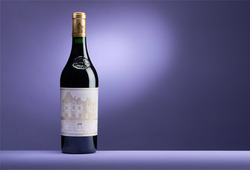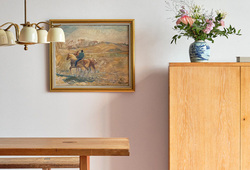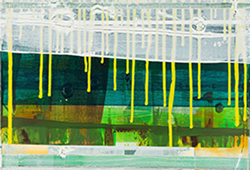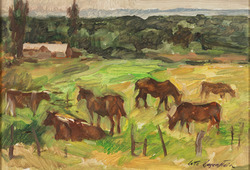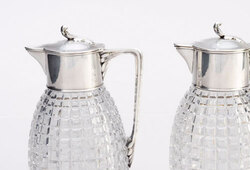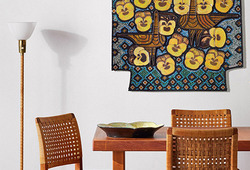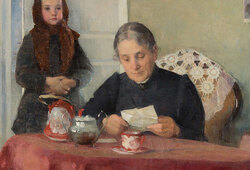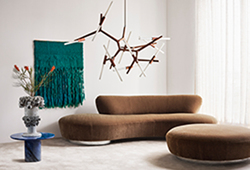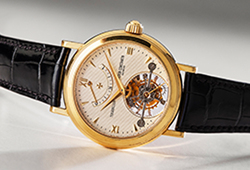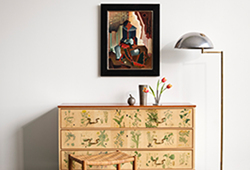Gösta Adrian-Nilsson
“Kvällspromenad i gatlyktans sken”.
Signed GAN. Gouache on cardboard, 45 x 28 cm.
Provenance
Mrs. Greta Santesson-Kjellberg (1898‑1999), Lund.
Private collection, Sweden.
More information
Greta Santesson-Kjellberg (née Santesson) was born in Stockholm and studied art and literature history at Stockholm University. Art was her great passion, and she later became the director of Galerie Moderne and Galleri Färg och Form. Greta Santesson-Kjellberg also organised several of Isaac Grünewald's exhibitions and was involved with Liljevalchs Art Gallery, Gothenburg Art Hall, and the Royal Swedish Academy of Fine Arts.
Artist
Gösta Adrian-Nilsson is most notable as a visual artist, and he is a pioneer of Swedish modernism. He studied at the Tekniske Selskabs Skole in Copenhagen and later for Johan Rohde at Zahrtmann’s school in Copenhagen. As an avant-gardist, Nilsson was constantly searching for new influences. In Berlin, he was influenced by the circle around the radical magazine Der Sturm, through Kandinsky and och Franz Marc. In Paris through Fernand Legér and the artists in his circle. GAN was an eclectic in the positive sense of the word. He took the the artist styles of the 1900s and created new impressions. Symbolism, cubism, futurism, expressionism, constructivim and Theosophy were the colours occupying his internal pallet. He had a sharp eye for the masculine and his painting was often energized by the vitality of modern technology, vibrant eroticism, and echoes of tyrants. No other Swedish modern artist exhibits such a unique style.
Read more
- Get started with buying and selling
- Favourite items
- Save searches
Log in here





